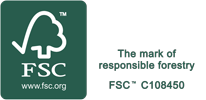For building applications which permit a Class B fire rating

Whilst the general guidance found here is applicable to a range of low-rise construction projects, additional measures may be required where high rise buildings are involved or where specialised work is undertaken. Please note that it is the responsibility of the client and contractor to ensure that your planned design is fully compliant with Building Regulations and complies with the latest fire safety guidance. For further information, please refer to the latest government documentation for your country location, and for complex or high-risk projects, please ensure that you consult a competent fire safety specialist.
BS EN 13501-1:2018 – Fire classification of construction products and building elements:
This European Standard (EN 13501) is common to all EU Member States and was published on 14th January 2019. It provides the reaction to fire classification procedure for all construction products, including products incorporated within building elements*.
The process for classification under this standard involves a combination of up to five rigorous tests designed to assess the product on a range of characteristics, including combustibility, heat levels, flame spread and smoke release. Once tested, the product receives an official classification of its fire rating, known as a Euroclass rating.
From best performing to worst performing, the Euroclass system is: A1, A2, B, C, D, E and F. It also provides additional classification (typically associated with reaction to fire classes D – B) for smoke production (from s1 (little or no smoke) to s3 (substantial smoke)) and flaming droplets/particles (from d0 (none) to d2 (quite a lot)).
Unlike our composite timber Dura Cladding which has fire safety built into the product itself, untreated wood typically has a Euroclass rating of E or D. When fire treated under factory conditions, this rating can reach as high as B, but fire retardant treated wood is heavier than untreated wood, the treatment and drying process reduces its strength and structural properties. Furthermore, each species of wood and profile shape must be independently tested to achieve a fire classification and in many cases, once the wood is cut, the exposed edges can then be vulnerable to fire, so please bear this in mind if you’re debating between natural wood and composite timber Dura Cladding (Class B) for your project.
If your project requires an A2 fire rating, you may also like to consider our flush fitting Dura Cladding Aluminium product and trims?
*Information correct at time of publication.
Source: Ministry of Housing, Communities and Local Government.
www.gov.uk/government/news/new-measures-to-improve-building-safetystandards







